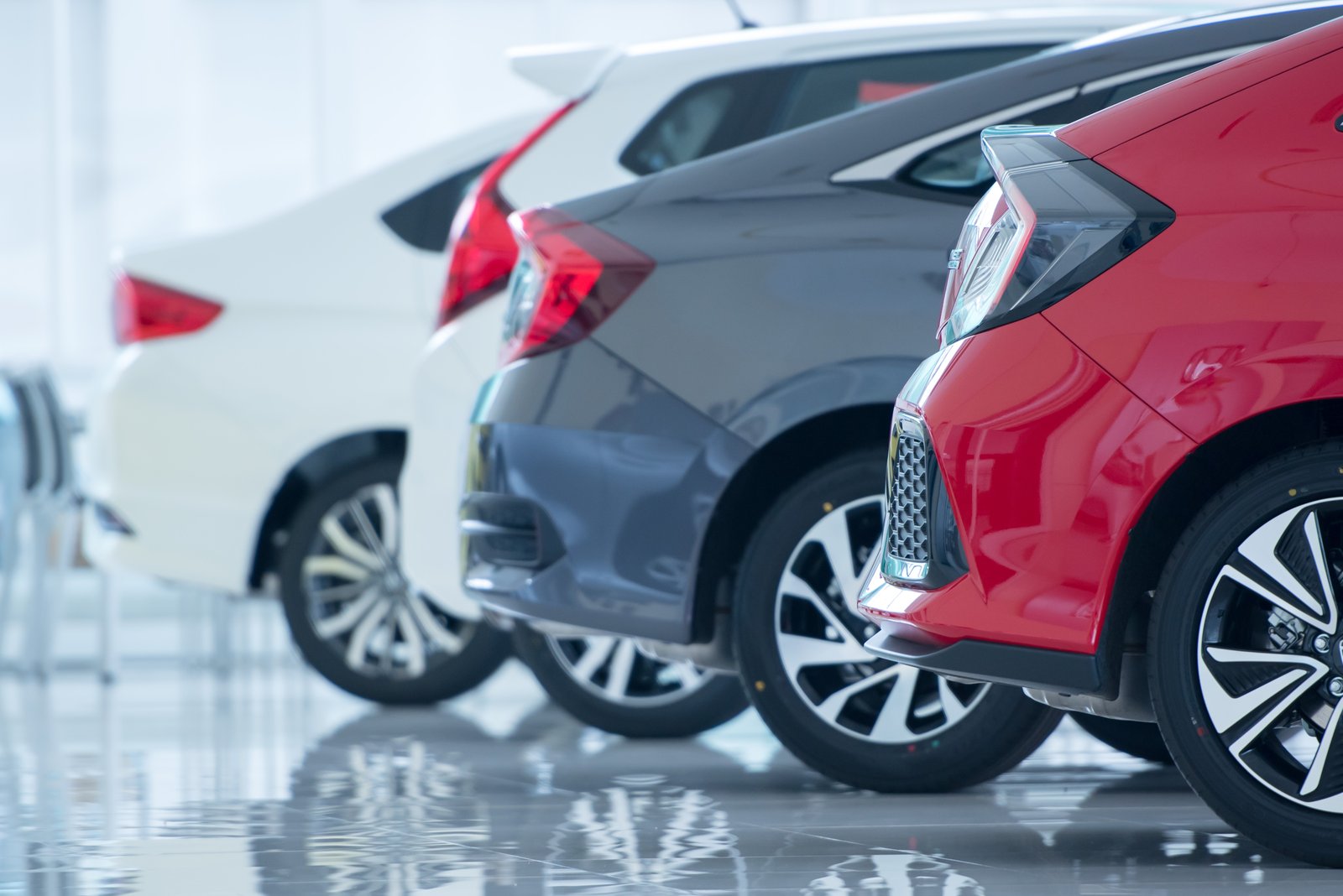
With EV sales beating records every year and an ever-growing selection of new EV models, the electric mobility transition is well underway. 2024 promises to bring EVs from a range of new segments: from the affordable and compact to the large and powerful muscle car category, there truly are endless options to choose from.
But with such an abundance of choice, it's nice to know which models are amongst the most anticipated. We’ve compiled below some of the most anticipated electric vehicles coming in 2024, including their specs and how long they take to charge.
This article features the following 5 models (click for quick access):
Volkswagen ID.7
After the success of the VW ID.3 and ID.4, Volkswagen is introducing its latest model in the ID lineup, with the VW ID.7. As Volkswagen’s first all-electric sedan, it is one of the rare EVs in its form factor and brings hallmark features from VW’s successful ID brand, including a spacious interior, great range, and a competitive price point.
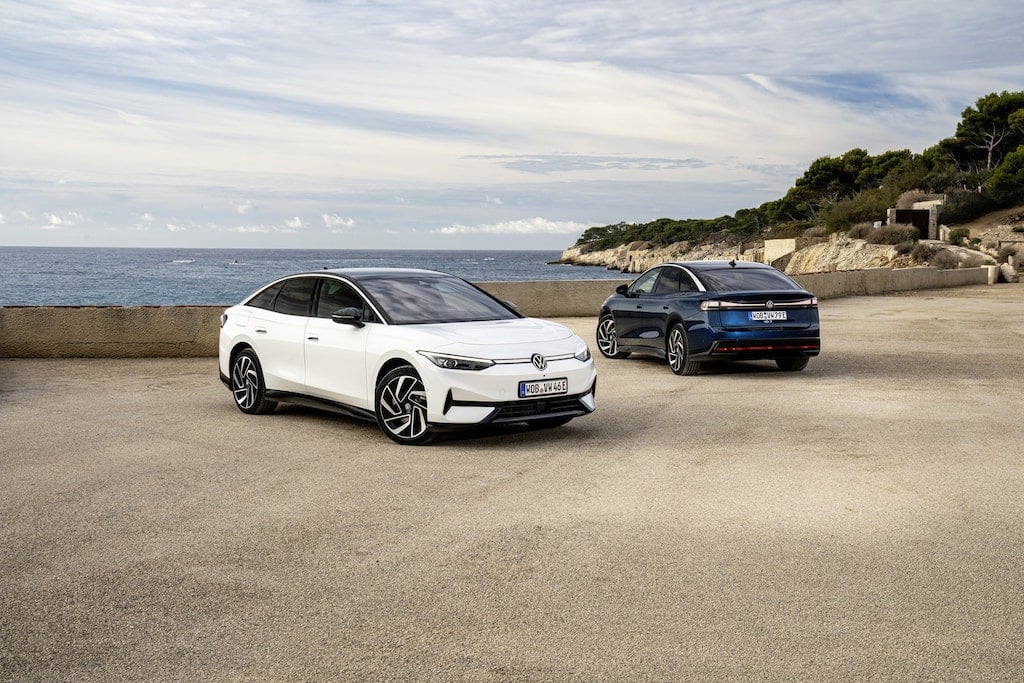
Picture via Volkswagen's official website under copyright and image rights (for editorial use)
Volkswagen ID.7 specs
Volkswagen ID.7 model variations
The Volkswagen ID.7 comes in 2 models at launch:
- VW ID.7 Pro: the base model has a 77 kWh battery and 384 mi (618 km) range.
- VW ID.7 Pro S: the Pro S model comes with an 86 kWh battery and 435 mi (700 km) range.
Volkswagen ID.7 range
The Volkswagen ID.7 has a range between 384 and 435 miles (618 and 700 km), depending on the model.
Volkswagen ID.7 battery
The Volkswagen ID.7 has a battery capacity of either 77 kWh or 86 kWh, depending on the model.
Volkswagen ID.7 price
The Volkswagen ID.7 starts at €62,650 in Europe and £55,570 in the UK, depending on the model type.* Pricing outside of Europe has not yet been confirmed by Volkswagen at the time of writing.
*The cost of a Volkswagen ID.7 can vary based on your location and dealership. At the time of writing this article, we took this estimated price from VW’s French and UK websites.
Volkswagen ID.7 release date
At the time of writing, the Volkswagen ID.7 is expected to start shipping initially in China, Europe, and North America in 2024.
Volkswagen ID.7 charging time
The time it takes to charge up a Volkswagen ID.7 varies based on the power output and type of charger. We’ve calculated the charging time with the most common charging outputs at each charging level.
|
Charging level |
Charging output |
Charging times*: |
Charging times*: VW ID.7 Pro S (86 kWh) |
|
Level 2 (AC) |
7.4 kW |
11h 33 min |
12h 54 min |
|
Level 2 (AC) |
11 kW |
7h 46 min |
8h 41 min |
|
Level 3 (AC) |
50 kW |
1h 01 min |
1h 08 min |
|
Level 3 (DC) |
125 kW |
29 min |
31 min |
|
Level 3 (DC) |
175 kW |
22 min |
24 min |
*These numbers provide a calculated estimation of charging times – from 0 to 100 percent (AC) and 20 to 80 (DC) percent state of charge (SOC) – and do not reflect actual charging times or real-life situations. For a more accurate representation of (or more information on) actual charging times, please refer to the original manufacturer or certified dealerships. The results are based on an equation that uses the standard battery size and average performance of charging stations as metrics and are rounded up for readability. The highest DC charging power is the maximum power supported by the vehicle.
Polestar 5
Polestar is set for a big year in 2024 – alongside its Polestar 4 SUV, the Swedish company is also debuting the Polestar 5. Also known as Polestar Precept from its concept car stage, the Polestar 5 is the most premium vehicle in Polestar’s lineup to date, aiming to redefine the high-end luxury sector. Embracing Polestar’s signature striking design and using environmentally friendly materials, the Polestar 5 is one of the most unique EVs planned for 2024.
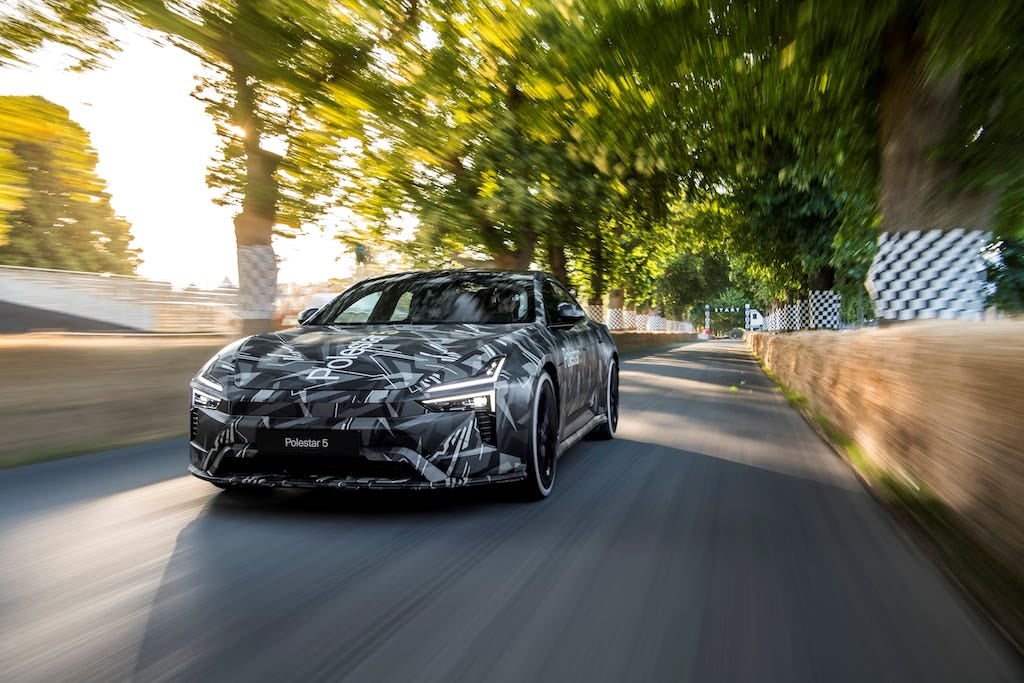 Picture via Polestar's official website under copyright and image rights (for editorial use).
Picture via Polestar's official website under copyright and image rights (for editorial use).
Polestar 5 specs
Polestar 5 model variations
Polestar has not yet confirmed model variations for the Polestar 5, however, it is likely to follow a similar pattern as other Polestar vehicles, with single and dual motor versions.
Polestar 5 range
While Polestar has not yet confirmed the range of the Polestar 5, it is expected to have a range of around 300 miles (450-500 km).
Polestar 5 battery
At the time of writing, Polestar has not yet confirmed the battery capacity of the Polestar 5, but it is expected to be in the 100 kWh range.
Polestar 5 price
Polestar has not yet confirmed the price of the Polestar 5, but it is expected to be in the $100,000 price range.
Polestar 5 release date
At the time of writing, the Polestar 5 is expected to start shipping in 2024.
Dodge Charger Daytona SRT
A unique new EV for 2024, the Dodge Charger Daytona SRT is electrifying the American muscle car segment. First announced in 2022, the Dodge Charger Daytona SRT is a striking EV that stays close to the brand’s muscle car roots. From its industry-first BEV exhaust sound and classic design cues to its signature performance, the Dodge Charger Daytona SRT is looking to redefine the possibilities of a performance EV.
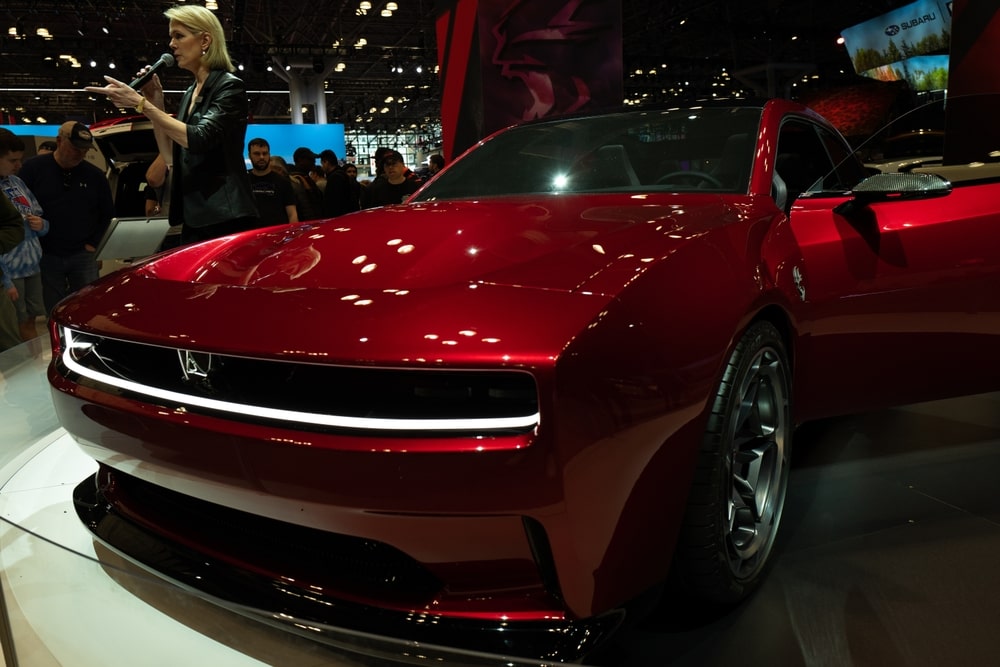
Dodge Charger Daytona SRT specs
Dodge Charger Daytona SRT model variations
The Dodge Charger Daytona SRT is expected to come in nine powertrain outputs, with three power levels and two levels of performance upgrades for each. There are two 400-volt systems, at 340 kilowatts (456 hp) and 440 kilowatts (590 hp) respectively, and there will be an 800 V SRT Banshee powertrain package released later.
Dodge Charger Daytona SRT range
At the time of writing, Dodge has not yet confirmed the Dodge Charger Daytona SRT EV’s range.
Dodge Charger Daytona SRT battery
At the time of writing, Dodge has not yet confirmed the Dodge Charger Daytona SRT EV’s battery capacity.
Dodge Charger Daytona SRT price
Dodge has not yet confirmed pricing for the Dodge Charger Daytona SRT; however, it will likely be priced at a similar premium price point to other Dodge SRT models.
Dodge Charger Daytona SRT release date
The Dodge Charger Daytona SRT is expected to be released in 2024.
2024 BMW i4
The BMW i4 has been a popular electric sedan since its launch in 2021, offering a compelling alternative to the Tesla Model 3. In 2024, it’s expected to get a facelift with an updated design, rolling out for production in the second half of the year. Building on the quality and design the German manufacturer is known for, the BMW i4 facelift seems like a good choice in the premium electric sedan market.
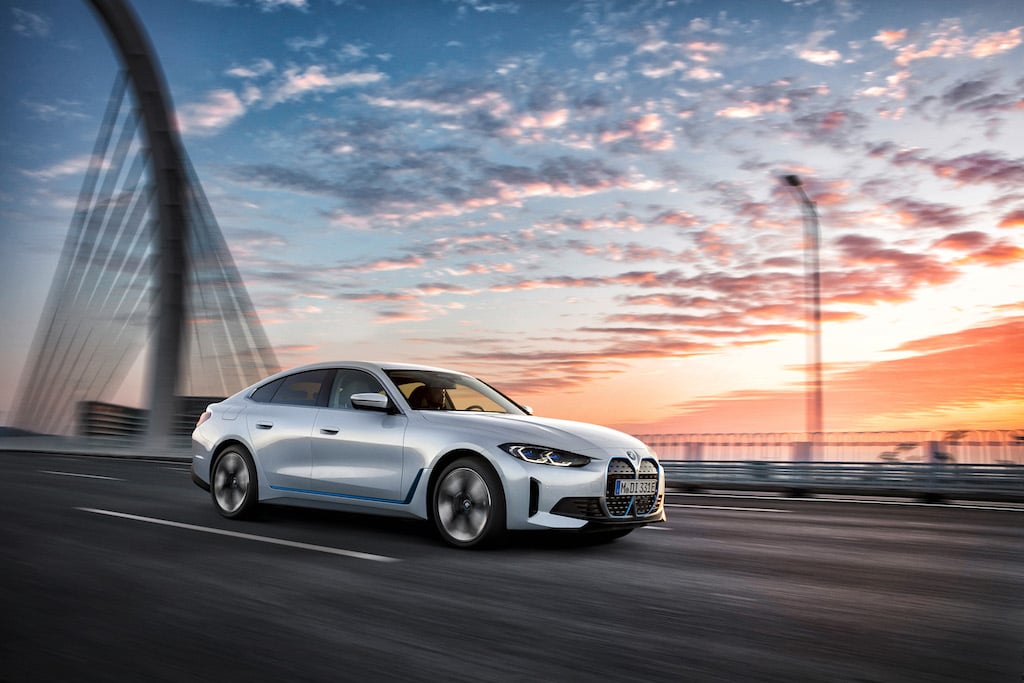 Picture via BMW's official website under copyright and image rights (for editorial use).
Picture via BMW's official website under copyright and image rights (for editorial use).
BMW i4 specs
BMW i4 model variations
The BMW i4 comes in four models:
- The BMW i4 eDrive 35 has a 67 kWh battery and between 252 and 276 miles (406 and 444 km).
- The BMW i4 eDrive 40 has an 81 kWh battery and between 283 to 307 miles (455 and 494 km).
- The BMW i4 xDrive 40 has an 81 kWh battery and between 283 to 307 miles (455 and 494 km).
- The BMW i4 M50 has an 81 kWh battery and between 227 and 269 miles of range (365 and 433 km).
BMW i4 range
The BMW i4 has a range between 227 and 307 miles (365 and 494 km), depending on the mode.
BMW i4 battery
The BMW i4 has a battery capacity of either 67 or 81 kWh, depending on the model.
BMW i4 price
The BMW i4 has a starting price of $52,200*, depending on the model.
*The cost of a BMW i4 can vary based on your location and dealership. At the time of writing this article, we took this estimated price from BMW’s US website.
BMW i4 release date
At the time of writing, BMW is expected to reveal full details of the BMW i4 facelift in early 2024 and start shipping the updated model in mid-2024.
BMW i4 charging speed
The time it takes to charge up a BMW i4 varies based on the power output and type of charger. We’ve calculated the charging time with the most common charging outputs at each charging level.
|
Charging level |
Charging output |
Charging times* (67 kWh model) |
Charging times* (81 kWh models) |
|
Level 2 (AC) |
7.4 kW |
10h 03 min |
12h 09 min |
|
Level 2 (AC) |
11 kW |
6h 46 min |
8h 10 min |
|
Level 3 (DC) |
50 kW |
53 min |
1h 04 min |
|
Level 3 (DC) |
125 kW |
26 min |
30 min |
|
Level 3 (DC) |
200 kW |
18 min |
21 min |
*These numbers provide a calculated estimation of charging times – from 0 to 100 percent (AC) and 20 to 80 (DC) percent state of charge (SOC) – and do not reflect actual charging times or real-life situations. For a more accurate representation of (or more information on) actual charging times, please refer to the original manufacturer or certified dealerships. The results are based on an equation that uses the standard battery size and average performance of charging stations as metrics and are rounded up for readability. The highest DC charging power is the maximum power supported by the vehicle.
Citroën ë-C3
A European classic, the Citroën C3 is getting an update in the form of the Citroën ë-C3 EV. With its practical form factor, affordable price, and sleek new design, the Citroën ë-C3 will be going head-to-head with the likes of the Fiat 500e and the Electric Mini Cooper to conquer European roads.
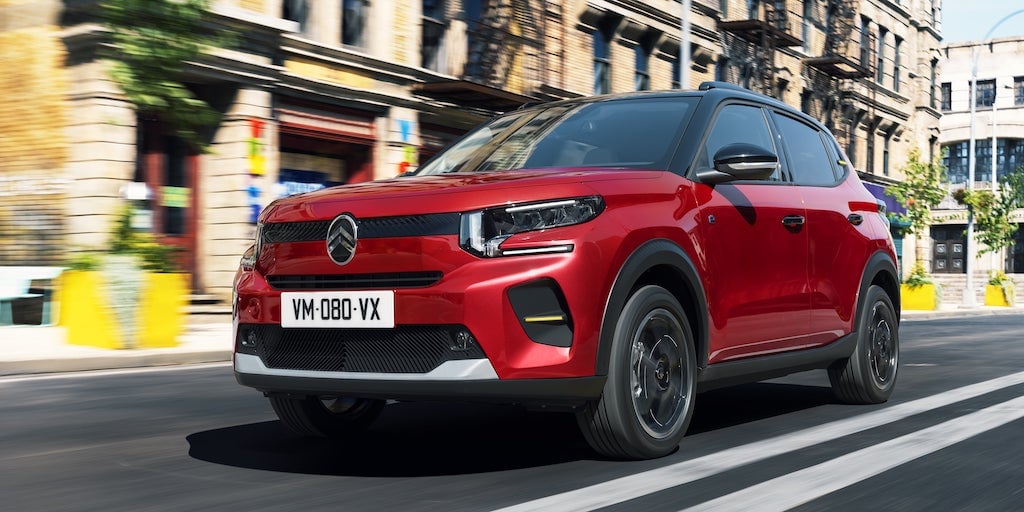 Picture via Citroën's official website under copyright and image rights (for editorial use).
Picture via Citroën's official website under copyright and image rights (for editorial use).
Citroën ë-C3 specs
The Citroën ë-C3 comes in two trims: the baseline ë-C3 YOU and the higher end ë-C3 MAX. Both come equipped with the same 44 kWh battery and 320 km (199 miles).
Citroën ë-C3 range
The Citroën ë-C3 has 320 kilometers (199 miles) of range.
Citroën ë-C3 battery
The Citroën ë-C3 has a 44 kWh battery
Citroën ë-C3 price
The Citroën ë-C3 has a starting price of €23,300*, depending on the model and configuration.
*The cost of a Citroën ë-C3 can vary based on your location and dealership. At the time of writing this article, we took this estimated price from Citroën’s French website.
Citroën ë-C3 release date
The Citroën ë-C3 is expected to be released across Europe in mid-to-late 2024. There are currently no plans to ship the ë-C3 outside of Europe.
Citroën ë-C3 charging speed
The time it takes to charge up a Citroën ë-C3 varies based on the power output and type of charger. We’ve calculated the charging time with the most common charging outputs at each charging level.
|
Charging level |
Charging output |
Charging times*: |
|
Level 2 (AC) |
7.4 kW |
6h 36 min |
|
Level 2 (AC) |
11 kW |
4h 26 min |
|
Level 3 (DC) |
50 kW |
37 min |
|
Level 3 (DC) |
100 kW |
22 min |
*These numbers provide a calculated estimation of charging times – from 0 to 100 percent (AC) and 20 to 80 (DC) percent state of charge (SOC) – and do not reflect actual charging times or real-life situations. For a more accurate representation of (or more information on) actual charging times, please refer to the original manufacturer or certified dealerships. The results are based on an equation that uses the standard battery size and average performance of charging stations as metrics and are rounded up for readability. The highest DC charging power is the maximum power supported by the vehicle.
New year new me EV
Whether you’re looking to make the jump to electric mobility or upgrade from an older EV, 2024 brings a wide range of new electric cars to choose from at a variety of price points, sizes, and formats.
If you’ve made it this far, you might be interested in the 5 most anticipated electric SUVs for 2024 as well. And if you’re curious to learn more about electric car charging, have a read of our complete EV charging guide for a comprehensive overview of the topic.
Related articles
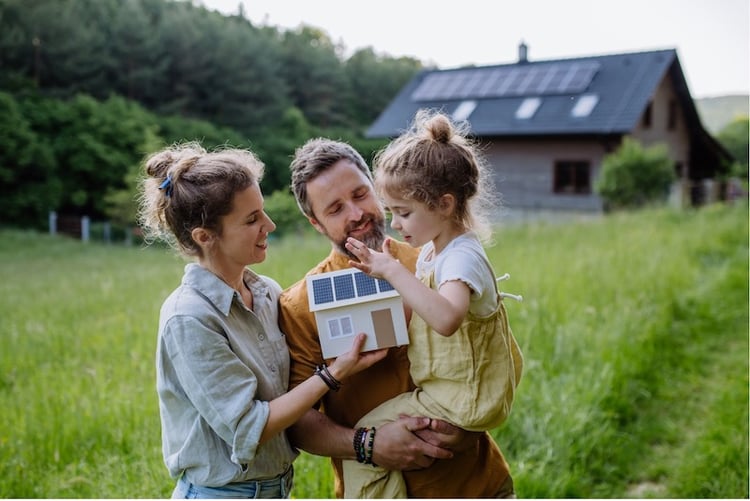
Smart Charging for Solar EV Systems: What is possible today?
There are a variety of smart solutions available, capable of optimizing your solar EV charging system in different...

Can solar EV charging save you money?
Charging your EV using household solar panels can indeed save you money on your utility bills. How much money solar EV...
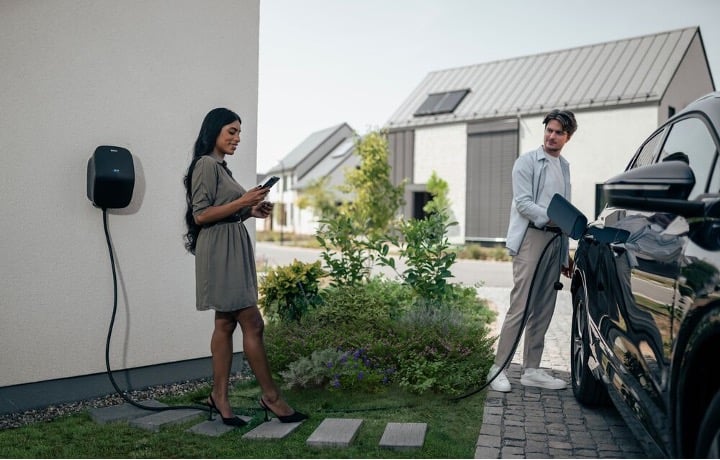
How to optimize your solar set-up for charging electric cars at home
There are several ways EV drivers can optimize a homegrown solar system to ensure their EV recharging needs are met....